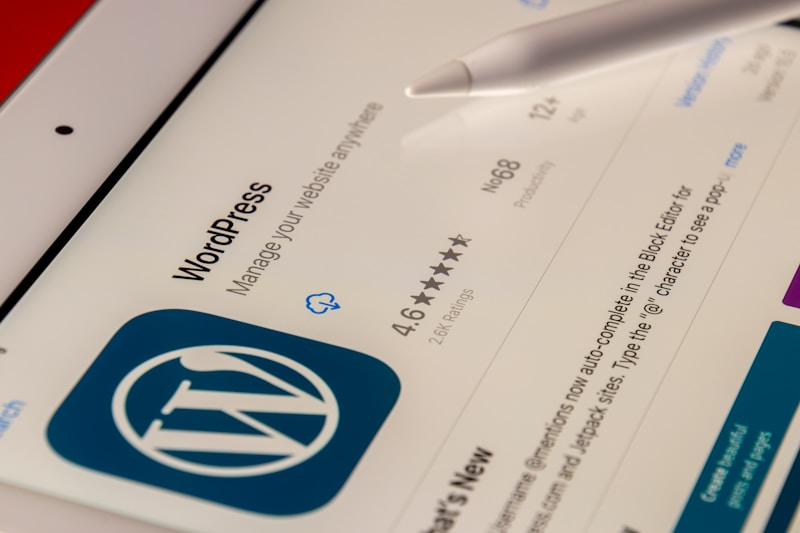Starting a blog today can be super exciting and rewarding, especially when you approach it with a strategy that combines timeless appeal and current trends. Whether you should go for a single-topic blog or a multi-topic one depends on a few things: your interests, your audience, and your goals for the blog. Let’s break it down step-by-step to help you figure out the best path.
Step 1: Choosing Your Blog Format — Niche vs. Multi-Topic
Both niche and multi-topic blogs have pros and cons, so let’s weigh them based on how you want your blog to grow and feel.
Niche Blog
A niche blog focuses on a single subject area (like travel, fitness, tech, or personal finance) and builds up an audience specifically interested in that topic. The main benefits of a niche blog include:
- Stronger Audience Targeting: You’ll attract readers who share a particular interest.
- Easier Branding: It’s easier to position yourself as an authority in a focused area.
- SEO Benefits: If you stick to a single niche, you can rank higher in search engines by consistently producing relevant content.
Cons: It can feel limiting if you have a variety of interests, and the content pipeline might dry up if the topic is too narrow.
Multi-Topic Blog
A multi-topic blog, or a “lifestyle” blog, allows for broader content across different areas. You could write about tech one day, travel another, and mental health another day. Benefits include:
- Creative Freedom: You’re not limited to one topic, so you can explore various interests.
- Appeal to a Wider Audience: You might attract readers from different interests, which can help you grow faster if you’re good at appealing to broader audiences.
Cons: It may be harder to rank high in SEO, build brand authority, and develop a loyal readership unless you’re able to tie the topics together with a consistent voice or approach.
Step 2: Finding Your Topics (Niche or Multi-Topic Ideas)
Regardless of format, here are some topic areas that are popular in 2024 but also have the potential to grow long-term.
If You Choose a Niche Blog:
- Personal Finance and Investing: People are always looking for ways to save, invest, and make money. Topics could range from “How to Start Investing with $100” to “Best Side Hustles for Beginners.”
- Mental Health and Wellness: Mental health awareness is increasing, and readers value authentic, well-researched advice on self-care, coping mechanisms, and emotional wellness.
- Sustainable Living: A growing trend, sustainable living includes topics like eco-friendly products, reducing waste, and green travel tips.
- Remote Work and Productivity: As more people work from home or adopt flexible work schedules, productivity tips, remote work setups, and career development are in demand.
- AI and Tech Trends: AI is evolving fast, and people want to stay updated. Cover topics like “Best AI Tools for Small Businesses” or “AI Trends Shaping 2024.”
If You Choose a Multi-Topic Blog:
You can mix any of the niche topics above or try a few broader lifestyle categories:
- Tech + Lifestyle: Discuss the latest gadgets and tools, but also include content on digital wellness, like managing screen time or balancing tech use.
- Travel + Personal Finance: A great combo if you can write about travel tips for budget travelers, remote work destinations, or personal finance hacks.
- Health + Food + Fitness: You can explore balanced diets, easy recipes, fitness routines, and mindful eating habits.
- Mindset + Productivity: Content about mental resilience, productivity hacks, morning routines, and mindfulness practices.
- Career Development + Side Hustles: Help readers improve their professional lives with resume tips, interview guides, and advice on finding side gigs.
Step 3: Brainstorm Blog Post Ideas
To get your blog off the ground, it’s helpful to start with some concrete post ideas. Aim for 5–10 posts to get a foundation, especially if you go niche. Here are ideas for both niche and multi-topic blogs to inspire you:
For a Niche Blog in Personal Finance
- “How to Budget for Beginners: A Step-by-Step Guide”
- “5 Side Hustles You Can Start With No Money Down”
- “Understanding Credit Scores: The Ultimate Guide”
- “Retirement Planning for Millennials: What You Need to Know”
- “Investing 101: The Basics of Stocks, Bonds, and Index Funds”
For a Multi-Topic Blog Covering Tech and Wellness
- “The Best AI Tools to Boost Your Productivity in 2024”
- “Digital Detox Tips: How to Cut Down Screen Time Without Missing Out”
- “Top Home Office Gadgets for Remote Workers”
- “How to Build a Morning Routine That Actually Works”
- “5 Healthy Eating Tips for Busy Professionals”
Step 4: Determining Blog Post Length and Style
Today’s readers appreciate in-depth articles. Aiming for posts of around 2,000 words is great for SEO and reader engagement. Here’s a good structure to follow:
- Introduction (100–200 words): Start with a hook that grabs attention and briefly explains what the post will cover.
- Body (1,600–1,800 words): Break down the main content into subheadings. Include examples, actionable steps, and tips to keep readers engaged.
- Conclusion (100–200 words): Summarize the main points and encourage readers to take action, ask a question to boost comments, or link to another post if you have related content.
Writing Tips:
- Keep it Conversational: Aim for a friendly, easy-to-read tone to make your blog feel approachable.
- Optimize for SEO: Use keywords naturally within the post. Don’t overdo it; focus on readability.
- Use Visuals: Include images, infographics, or charts to break up the text and make posts visually appealing.
Step 5: Planning Your Blog Strategy
- Consistency: Aim for a posting schedule you can stick to, even if it’s just once a week or biweekly.
- Promoting Your Blog: Share your posts on social media, consider using Pinterest (especially if you have a visually driven blog), and engage in communities relevant to your topic (like Reddit or specialized Facebook groups).
- Monetization: Think long-term. Options like affiliate marketing, sponsored content, and eventually, ad placements can become income streams once you have a solid reader base.
Step 6: Additional Tips for Standing Out
- Develop a Unique Voice: Readers often come back for personality and relatability.
- Leverage Analytics: Track what posts are popular so you can create similar content or dive deeper into those topics.
- Experiment with Multimedia: Explore adding podcasts, videos, or even simple graphics to enhance the experience for your audience.
Summing It All Up
To start a successful blog in 2024, decide whether you prefer a focused niche or a multi-topic approach based on your interests and goals. Invest time in brainstorming a few initial post ideas and aim for posts that offer in-depth, high-quality information. By keeping posts around 2,000 words, you’ll strike a balance between thoroughness and reader engagement. And don’t forget to have fun with it — a blog that feels genuine and passionate is one that readers want to follow.




